1 Find the most reasonable pattern in the following table Ex
1. Find the (most reasonable) pattern in the following table. Explain the pattern in English and fill in the last column.
| 1 | 3 | 9 | 3 | 11 | 18 | 13 | 19 | 27 | 55 | |
| 2 | 6 | 2 | 7 | 15 | 8 | 17 | 24 | 34 | 29 | |
| 3 | 1 | 5 | 12 | 5 | 13 | 21 | 21 | 23 | 30 |
Solution
If we carefully observed diagonal elements up-and-to-the-right direction we could recognize patterns in those elements.
Let’s start with number 2 in first column and diagonal up-and-to-the right, which is 3. Both these are prime number. Now if we skip two diagonals and observe the numbers 5, 7 and 11; we can determine that they are also prime numbers in continuity with 2 and 3. Let’s draw a revised table where all the prime number patterns are indicated by * (asterisk).
1
3 *
9
3
11 *
18
13
19 *
27
55
2 *
6
2
7 *
15
8
17 *
24
34
29 *
3
1
5 *
12
5
13 *
21
21
23 *
30
Continuing with the above logic, the next prime after 29 will be 31. So the table will now become:
1
3 *
9
3
11 *
18
13
19 *
27
55
31
2 *
6
2
7 *
15
8
17 *
24
34
29 *
3
1
5 *
12
5
13 *
21
21
23 *
30
Next notice the pattern in the diagonal elements immediate after the asterisks. The numbers are (3, 6, 9); (12, 15, 18); (21, 24, 27); (30). The numbers are in Arithmetic Progression (AP) with a Common Difference of 3. The numbers are marked with #. The table is shown below.
1
3 *
9 #
3
11 *
18 #
13
19 *
27 #
55
31
2 *
6 #
2
7 *
15 #
8
17 *
24 #
34
29 *
3 #
1
5 *
12 #
5
13 *
21 #
21
23 *
30 #
Continuing with the above logic, the next number after 30 in the Arithmetic progression with common difference of 3 will be 33. So the table will now become:
1
3 *
9 #
3
11 *
18 #
13
19 *
27 #
55
31
2 *
6 #
2
7 *
15 #
8
17 *
24 #
34
29 *
33
3 #
1
5 *
12 #
5
13 *
21 #
21
23 *
30 #
Let’s observe the remaining numbers which are marked with +. The table is shown below.
1 +
3 *
9 #
3 +
11 *
18 #
13 +
19 *
27 #
55 +
31
2 *
6 #
2 +
7 *
15 #
8 +
17 *
24 #
34 +
29 *
33
3 #
1 +
5 *
12 #
5 +
13 *
21 #
21 +
23 *
30 #
The numbers are 1,1,2,3,5,8,13,21,34,55. The sequence represents the Fibonacci Series, where each digit is the sum of its previous two digits. The series start with 1, 1,... Now the last number is 55 and its immediate preceding number is 34. So the number next to 55 will be (34+55) which is 89.
So the Table now becomes:
1 +
3 *
9 #
3 +
11 *
18 #
13 +
19 *
27 #
55 +
31
2 *
6 #
2 +
7 *
15 #
8 +
17 *
24 #
34 +
29 *
33
3 #
1 +
5 *
12 #
5 +
13 *
21 #
21 +
23 *
30 #
89
So the numbers in the last column will be:
31
33
89
| 1 | 3 * | 9 | 3 | 11 * | 18 | 13 | 19 * | 27 | 55 |
|
| 2 * | 6 | 2 | 7 * | 15 | 8 | 17 * | 24 | 34 | 29 * | |
| 3 | 1 | 5 * | 12 | 5 | 13 * | 21 | 21 | 23 * | 30 |
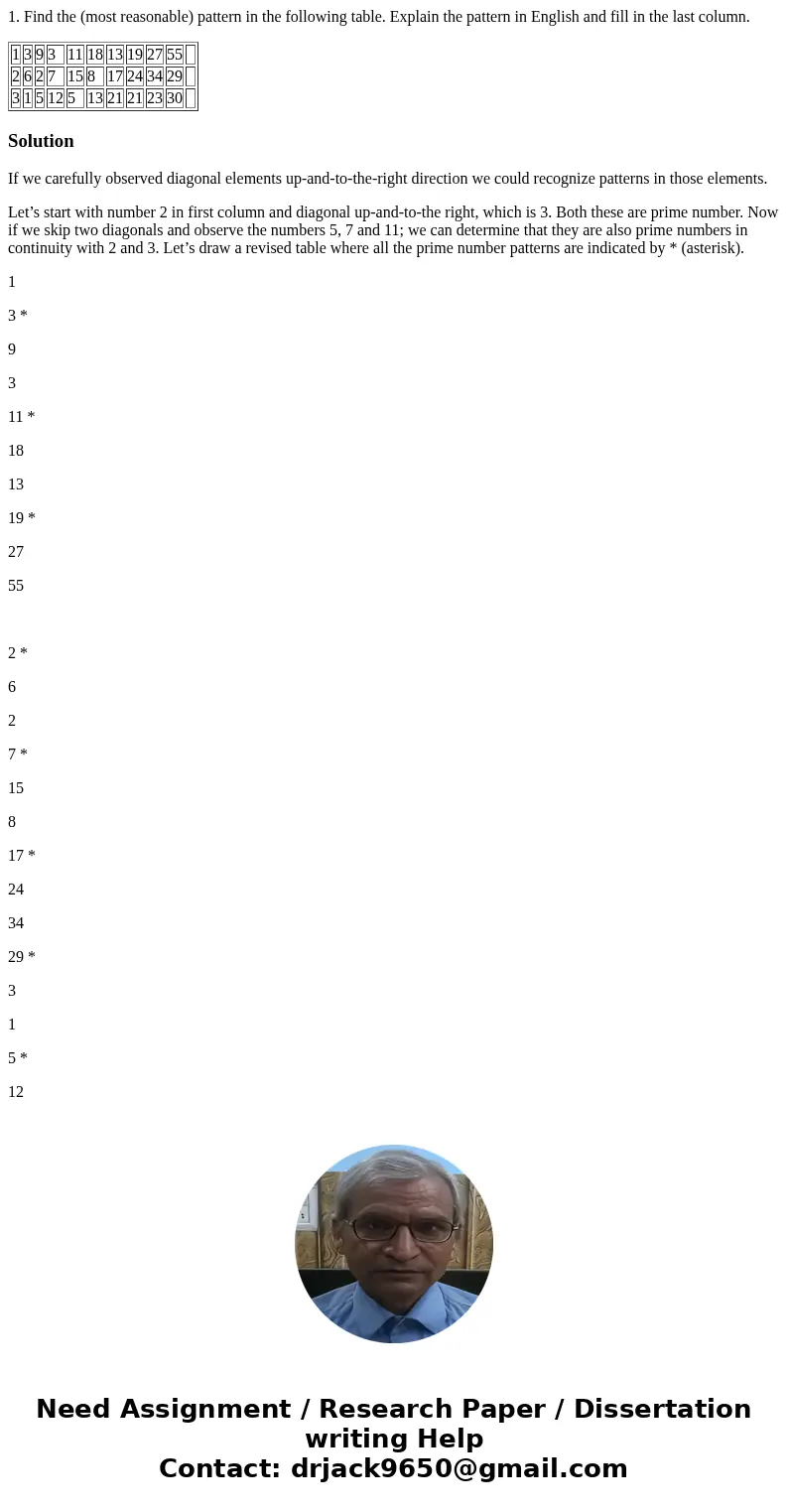
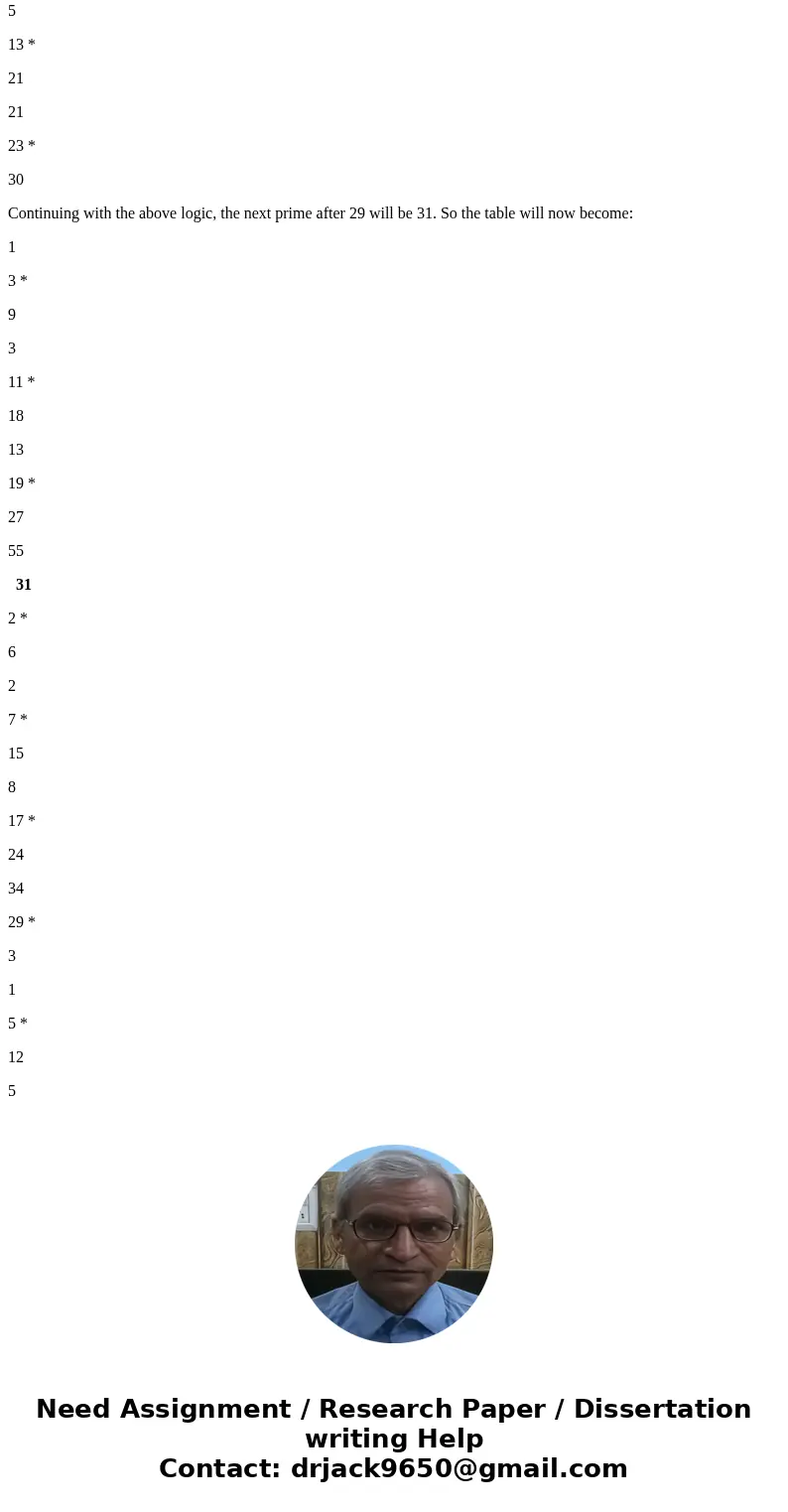
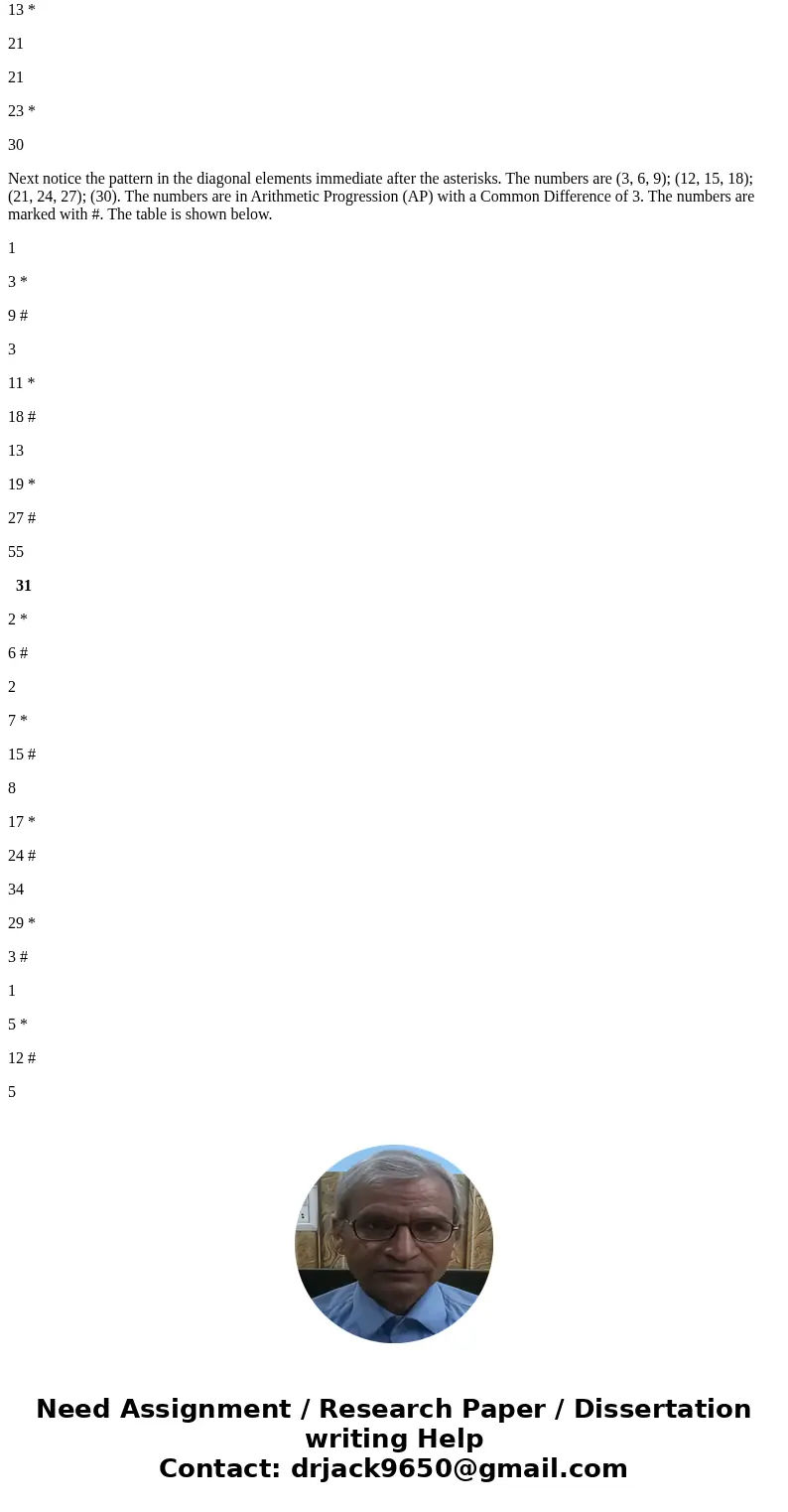
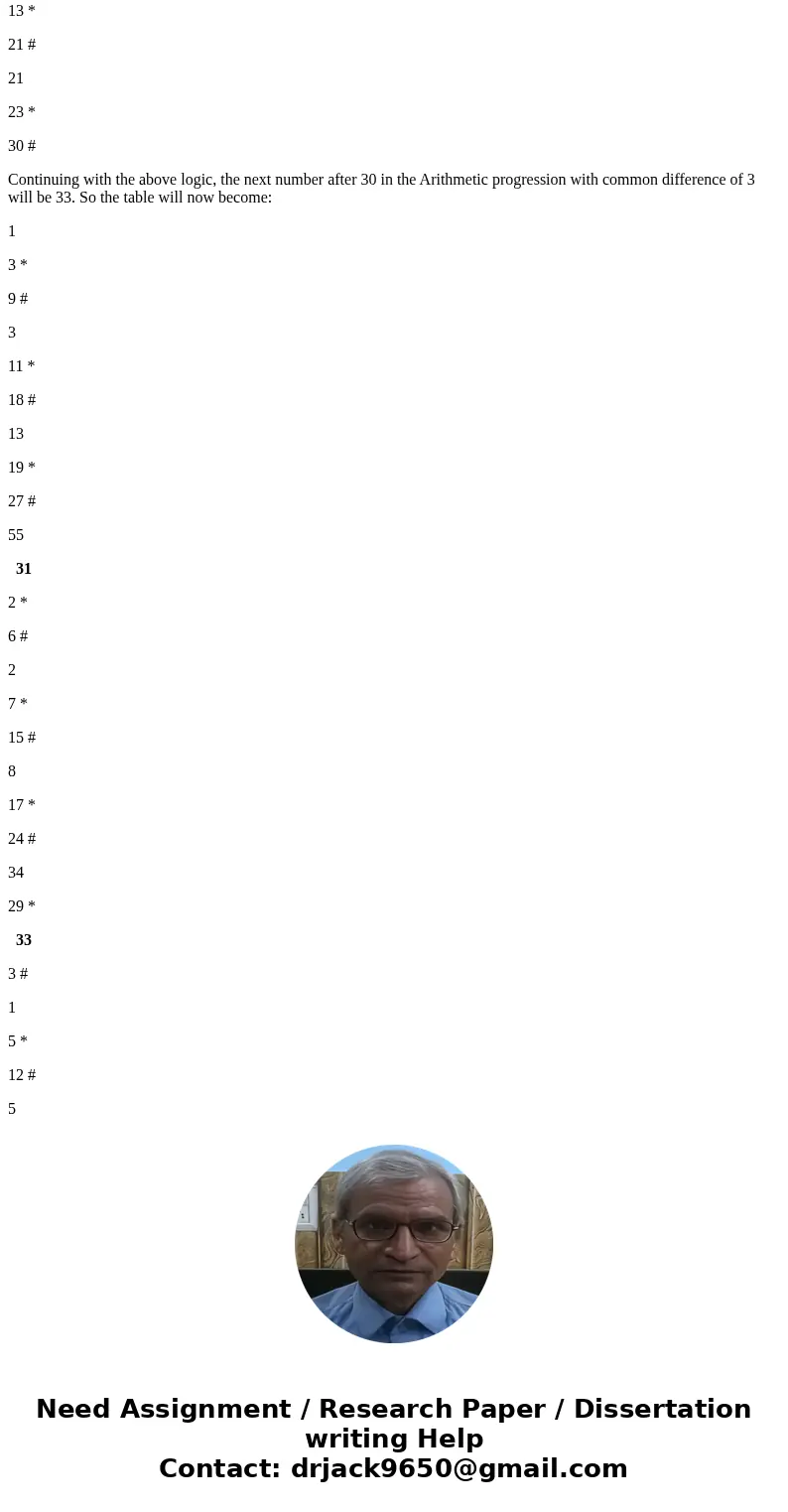
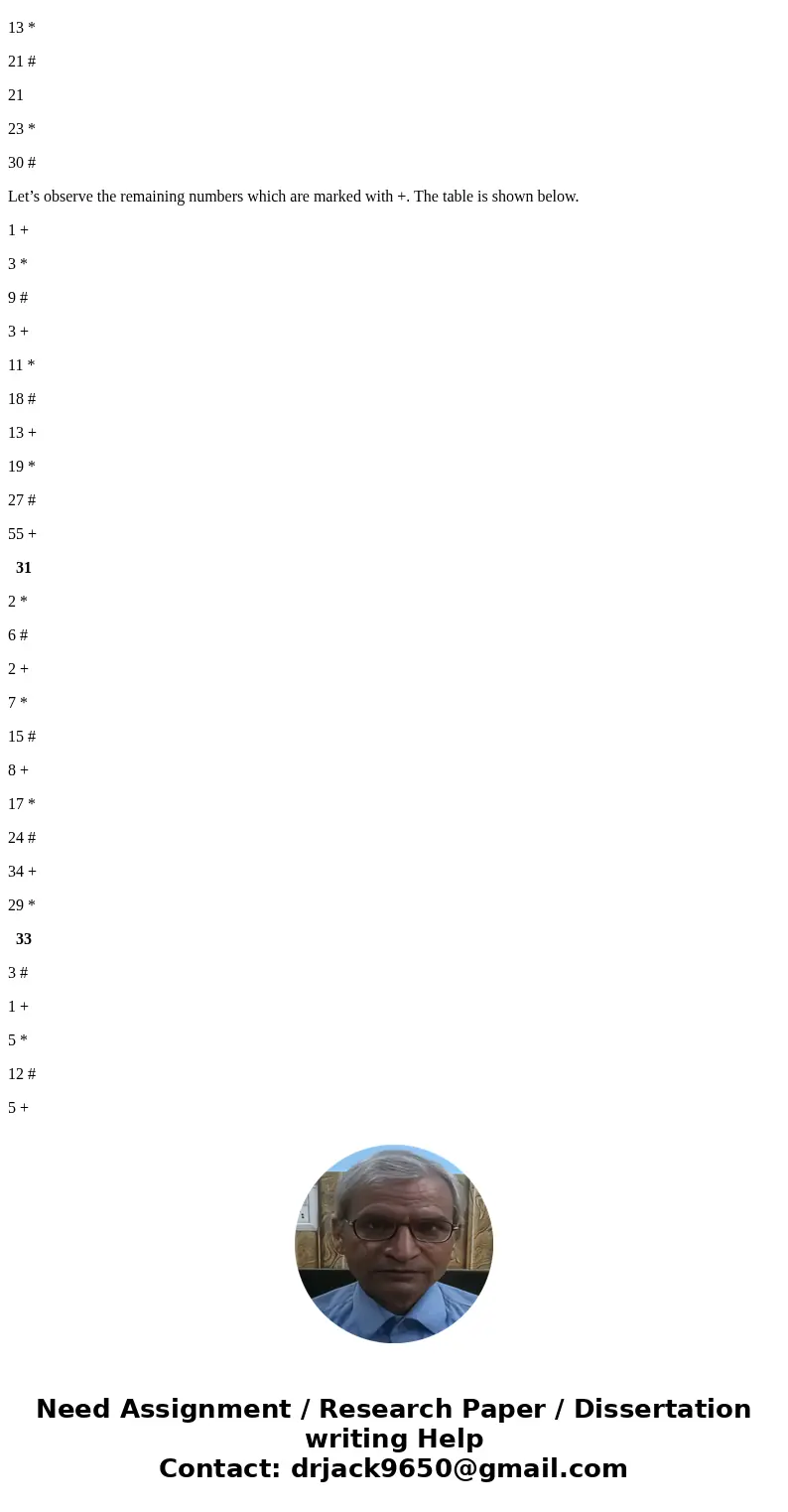
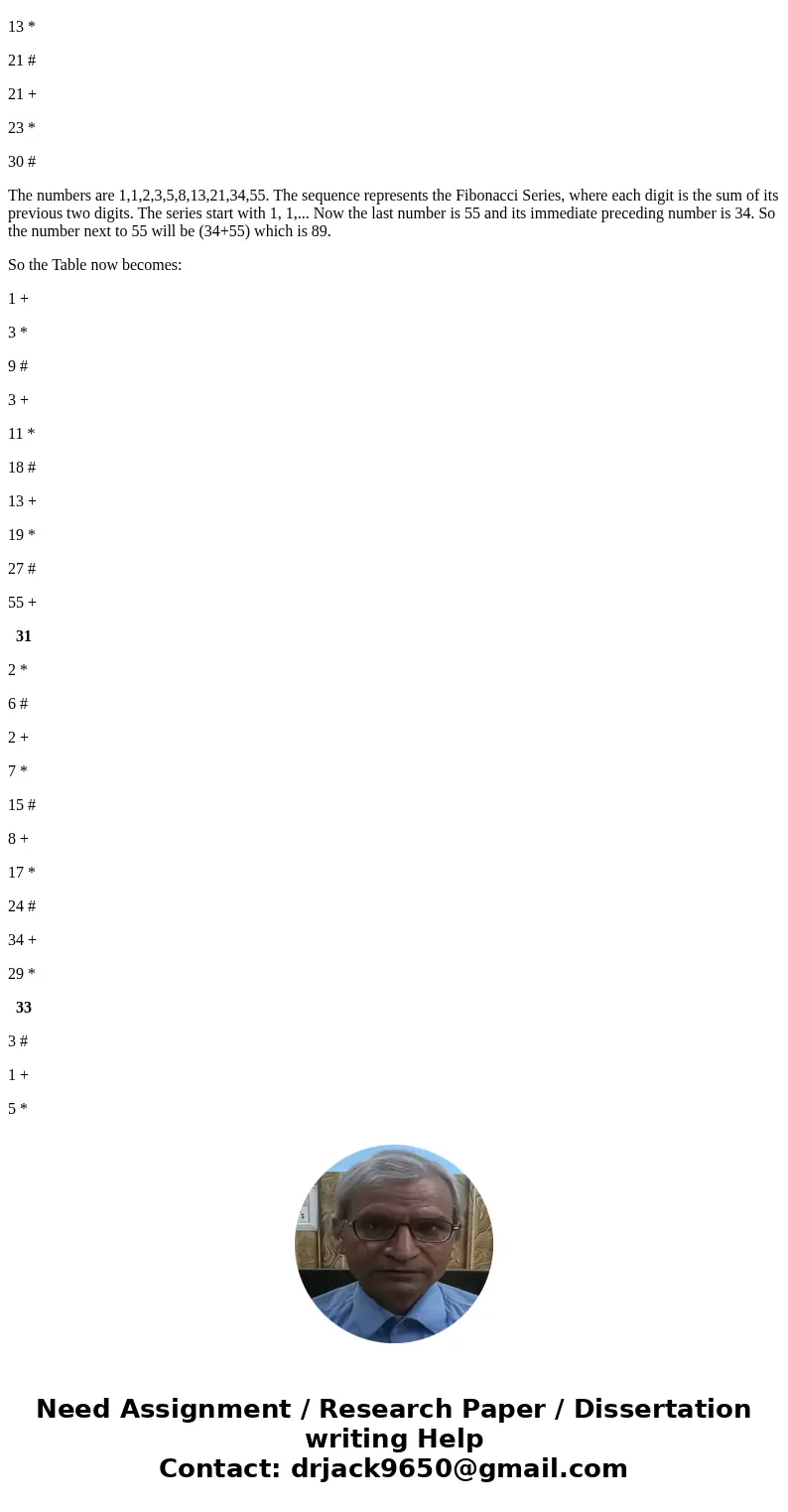
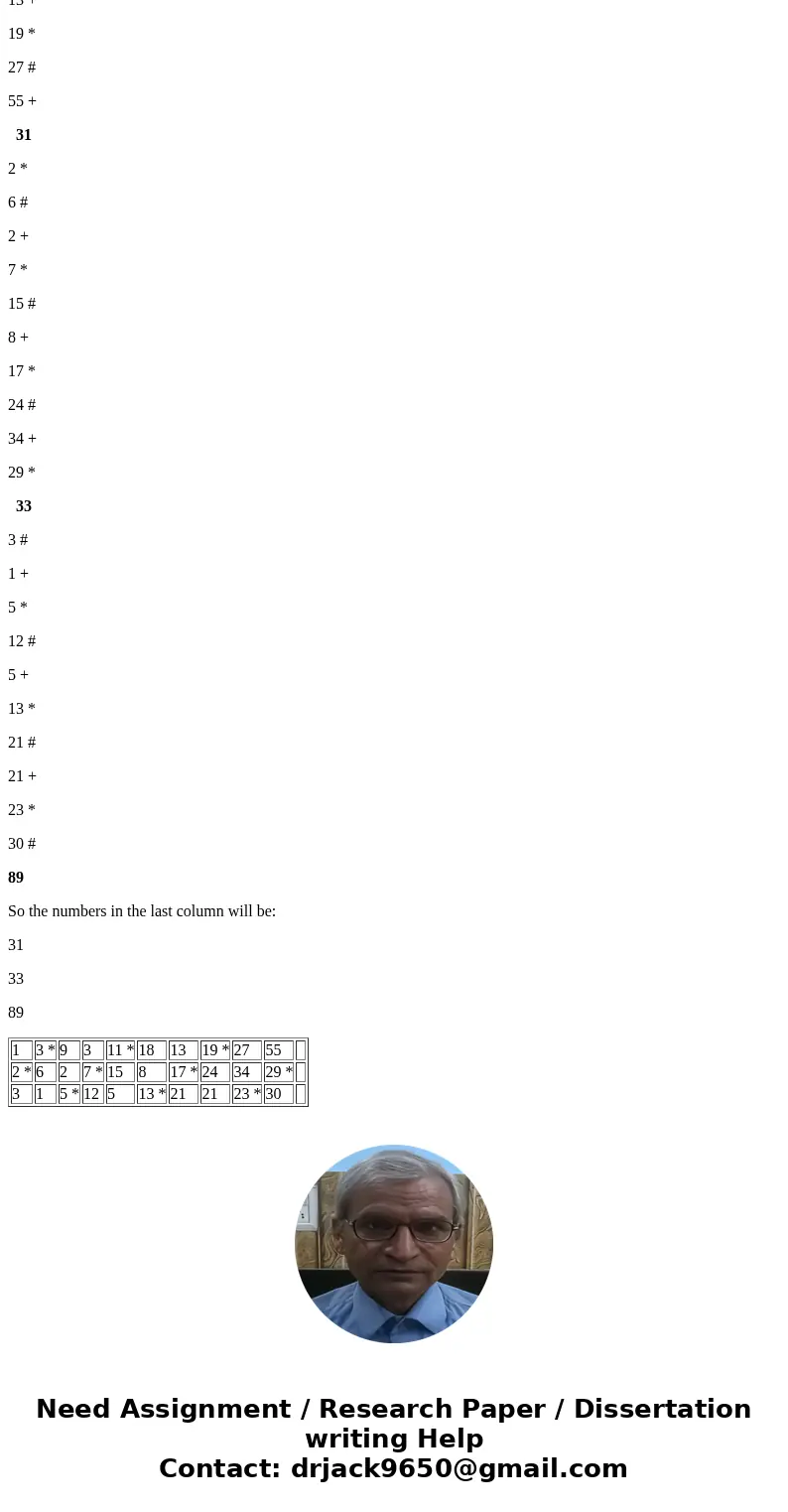
 Homework Sourse
Homework Sourse